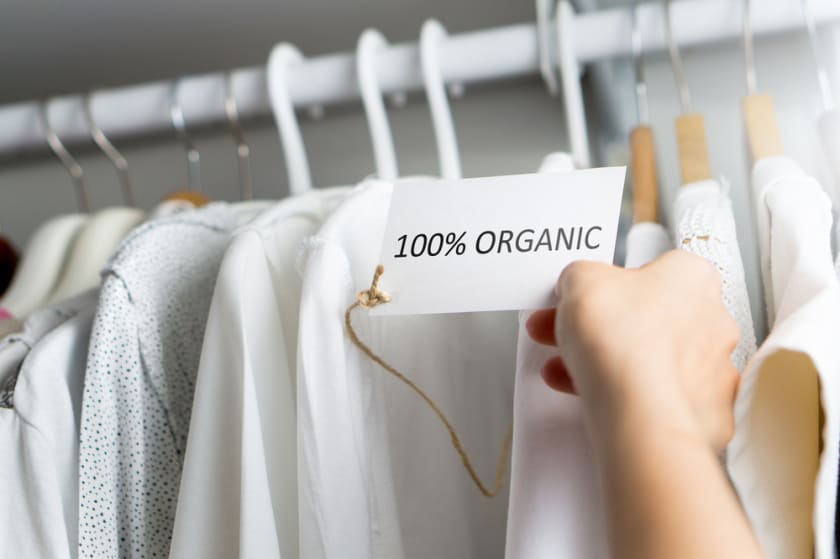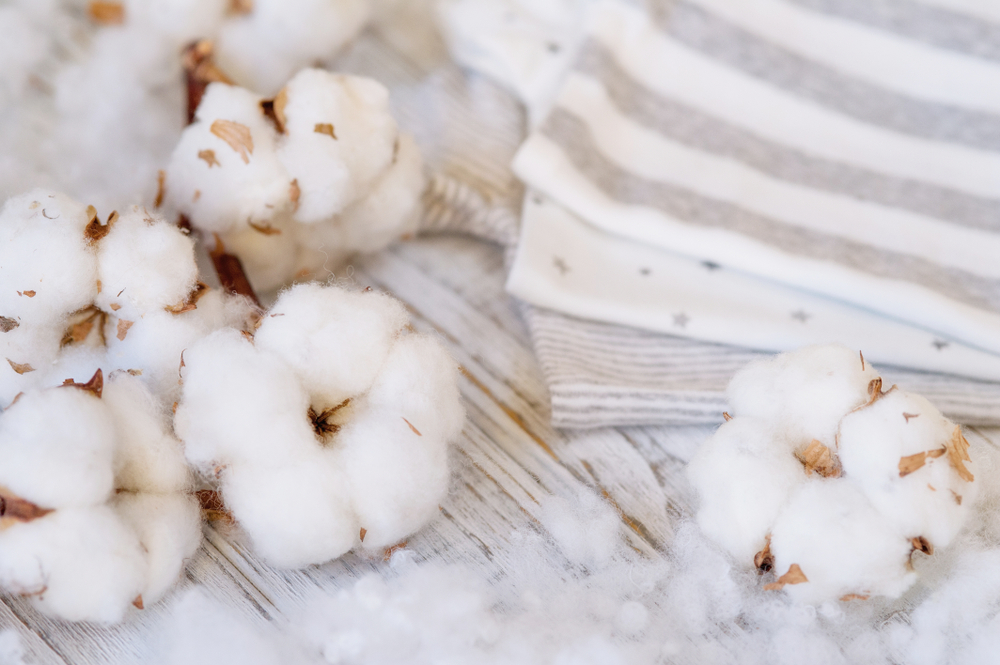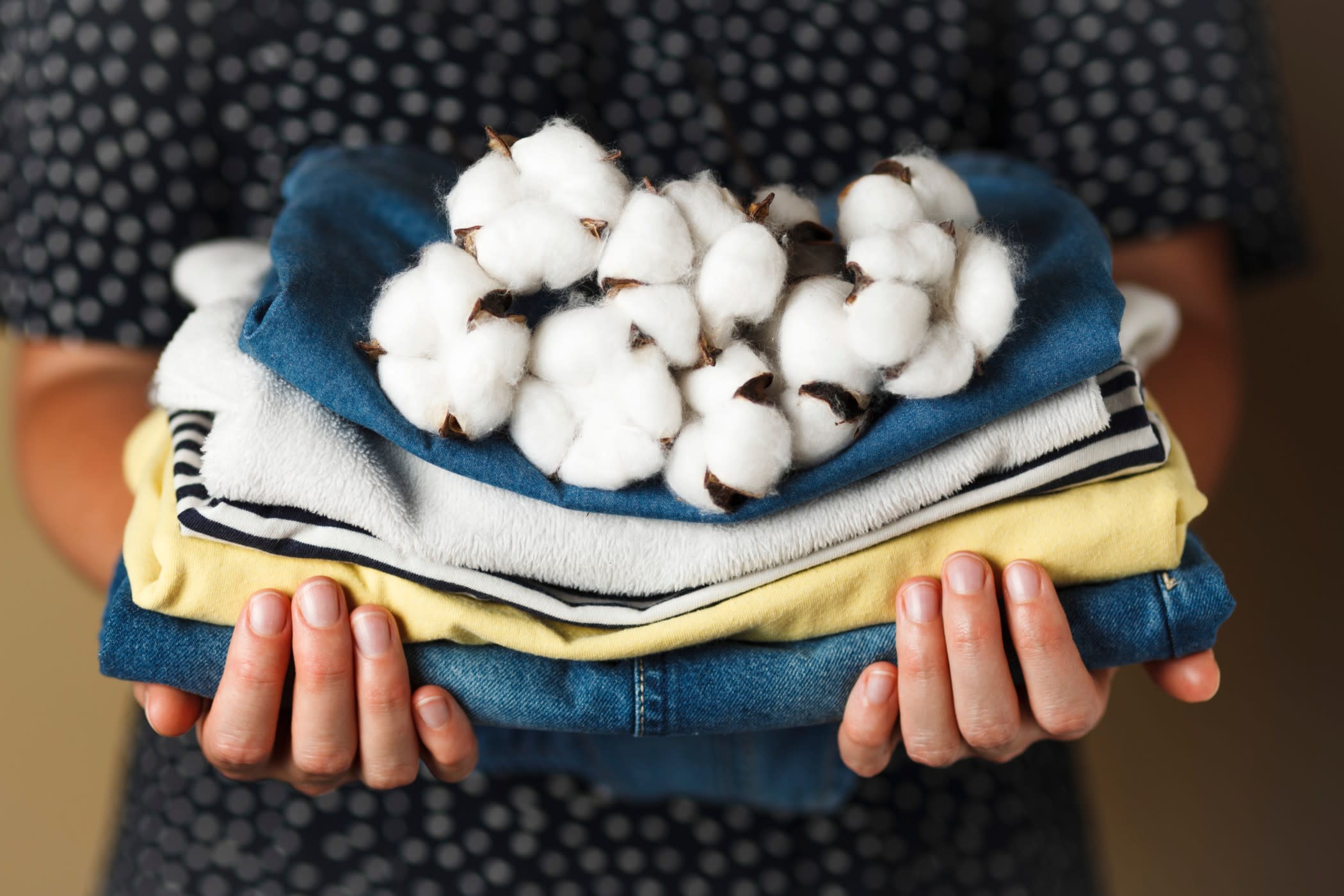Organic Clothing 101



With the effects of climate change looming over humanity, eco-friendly practices like organic farming are the need of the hour. An increasing number of people around the world have been practising organic farming over the past few years. A corollary of this eco-friendly farming practice, organic clothing is rapidly making its way into the fabric market. Organic clothing is the fabric made from cotton and other raw material cultivated through organic farming.
Organic agriculture has been a hit in textile manufacturing because it doesn’t involve genetically modified seeds, pesticides, or any synthetic chemical compounds. The benefits of this type of cultivation include zero harm to the environment along with a fine-quality textile. The Global Organic Textile Standard or GOTS is the benchmark of quality that establishes the scale of production authenticity in the textile sector.
However, GOTS is not the only way to appraise the quality of organic cotton—there are plenty of other standards being used worldwide for certifying the fabric. In fact, some of these labels are assigned to detect the number of pollutants created in the production of organic fabrics. From leading clothing brands to local markets, consumers can now easily find impressive organic cotton pieces in the latest patterns hassle-free.
The link between organic clothing and the environment
In farming, when the same crop is harvested on the same land for many years at a stretch, it can lead to moisture reduction in the soil. Plus, the use of pesticides and other substances can ruin the quality of the groundwater and soil. Organic cultivation, on the other hand, protects the arability of the land.
Moreover, organic farming uses natural cotton seeds that have not been genetically modified. The final product manufactured from organically grown cotton is widely appreciated and bought by the end-users. Apart from this, the entire process, from harvesting to production, is safe for the habitat of local animals and people living around the land.
Another prominent reason behind the popularity of organic cotton is the reduced consumption of water. Typical agricultural methods depend on harmful chemicals and use a significant amount of water.
Also, since the cotton crop is highly vulnerable to pest infestation, farmers have to use different kinds of pesticides to protect it.
Moreover, a simple piece of cotton also requires the use of heavy chemicals during the dyeing process. Due to organic clothing production, farmers and other workers don’t have to deal with such chemicals. The organic farming of cotton can eliminate health hazards while saving the environment from drastic harm caused by chemicals.
Imposed accountability
Even though the cotton farming process is chemical-free and eco-friendly, most stores use it only as a label to accredit its worth in terms of its production. People don’t realise that not everything that comes from organic farming is always eco-friendly. Some manufacturers do use organic cotton to make clothes, but the colouring process involves using synthetic dyes that could cause skin allergies. On the contrary, organic textiles bought from reliable manufacturers are less likely to affect the skin.
Organic clothing—where does it stand in the global market?

The worldwide clothing market has already surpassed the number of three trillion dollars so far with a 2% contribution to the global GDP. Since there are hundreds of top clothing brands around the world, the overall menswear and womenswear clothing industry has crossed the mark of 1000 billion dollars. This doesn’t include childrenswear and other luxury goods such as handbags, shoes, and other accessories, which amount to a few hundred billion dollars.
All in all, the vast realm of worldwide clothing has so much to offer for consumers already. Yet, organic clothing has successfully managed to carve its space in the market. Unfortunately, the trend of organic clothing is struggling in some areas due to strict certification requirements in various countries. Despite a booming demand amongst consumers, the growth of organic fashion is not as efficient as it could be.
Even though conventional cotton harvesting has been in practice for decades, this new and improved organic agriculture technique has the potential to sustain a lasting balance between the environment and market demands. The following comparison between traditional cotton farming and organic cotton farming justifies the significance and practical requirement of organic clothing.
| Conventional Cotton Agriculture | Organic Cotton Agriculture |
| Land detoxification is not a part of conventional cotton harvesting. | Farmers use land detoxification procedures before sowing the crop and starting irrigation. |
| It usually involves the use of various chemical fertilisers and pesticides. | Organic farming relies on natural manure, compost and other natural inputs. |
| Methods involving the use of natural pesticides or bio-controlling of insecticides are not followed. | Bio-controlling of pesticides and insecticides is a common process in organic farming. |
| It involves the use of genetically modified seeds and mono-crop practices. | In organic cotton farming, farmers practice crop rotation and only use natural seeds. |
| In conventional cotton farming, people utilise synthetic chemical products to remove weeds. Plus, the excess use of synthetic chemicals leads to reduced water retention capacity of the land. | Organic cotton farming involves the manual removal of weeds to eliminate the use of chemicals in any way. This practice ensures that the water retention quality of the soil is not affected. |
| The conventional farming process greatly affects the natural habitat of animals and pollutes the land and the water. | It is a process that causes far less environmental harm. |
| Overuse of chemical pesticides and insecticides leads to deforestation, soil erosion, chemical defoliation, and ecological imbalance. | Even though farming causes deforestation, most organic farming practices safeguard the ecological balance. |
Benefits of using organic clothing

It is people-friendly.
Organic clothing is more of a necessity rather than a choice for someone prone to skin allergies. Not all fabrics are meant to be worn on a regular basis; some fabrics cause skin irritation, redness, itching, and whatnot. Inorganic methods of cotton agriculture are bound to consume different kinds of toxic chemicals to prevent pests and boost the growth of cotton.
It is eco-friendly.
Farmers usually focus on protecting the crop from pests and insect infestation. In the interest of crop health, conventional farming involves heavy use of artificial pesticides and insecticides containing toxic chemicals in high proportions. These chemicals penetrate the soil layer and reach underground water levels. This results in soil pollution and water pollution. Some of these products also emit harmful gases and affect the quality of air as well.
On the other hand, organic clothing employs farming techniques that ensure safety and help conserve natural resources.
It is cost-effective.
The use of organic fertilisers and natural manure effectively reduces the cost of agriculture. This affects the overall cost of cotton. In organic farming, farmers don’t need to spend on the same kinds of inputs as in conventional farming. Thus, they can produce more cotton with less investment. The cost reduction in farming moves forwards to a far less expensive manufacturing process. This way, clothes can become more affordable than before. It is a win-win for all, including the farmers, manufacturers, and consumers.
It is factory-friendly.
People involved in the manufacturing and dyeing processes often have to deal with heavy chemicals that can cause health issues like boils, skin disease, rashes and other ailments. The production of organic textiles does not pose these risks.
It encourages environmental awareness.
The environment has been deeply affected by the overexploitation of resources around the world. Organic clothing can encourage people to adopt eco-friendly practices in more areas of their lives.
It is easy to maintain.
When it comes to taking care of fabrics, people tend to use the best products to make sure the clothes don’t fade or wear out. This can consume time and resources. However, organic clothes don’t require substantial maintenance to preserve their quality. In addition to this, the quality and comfort offered by organic fabrics are usually high.
Conclusion
The booming interest in organic clothing is proof that people are ready to make more environmentally responsible choices. Minimising the use of toxic chemicals and protecting our natural resources are the peripheral effects of organic clothing and its existence in the market.



















